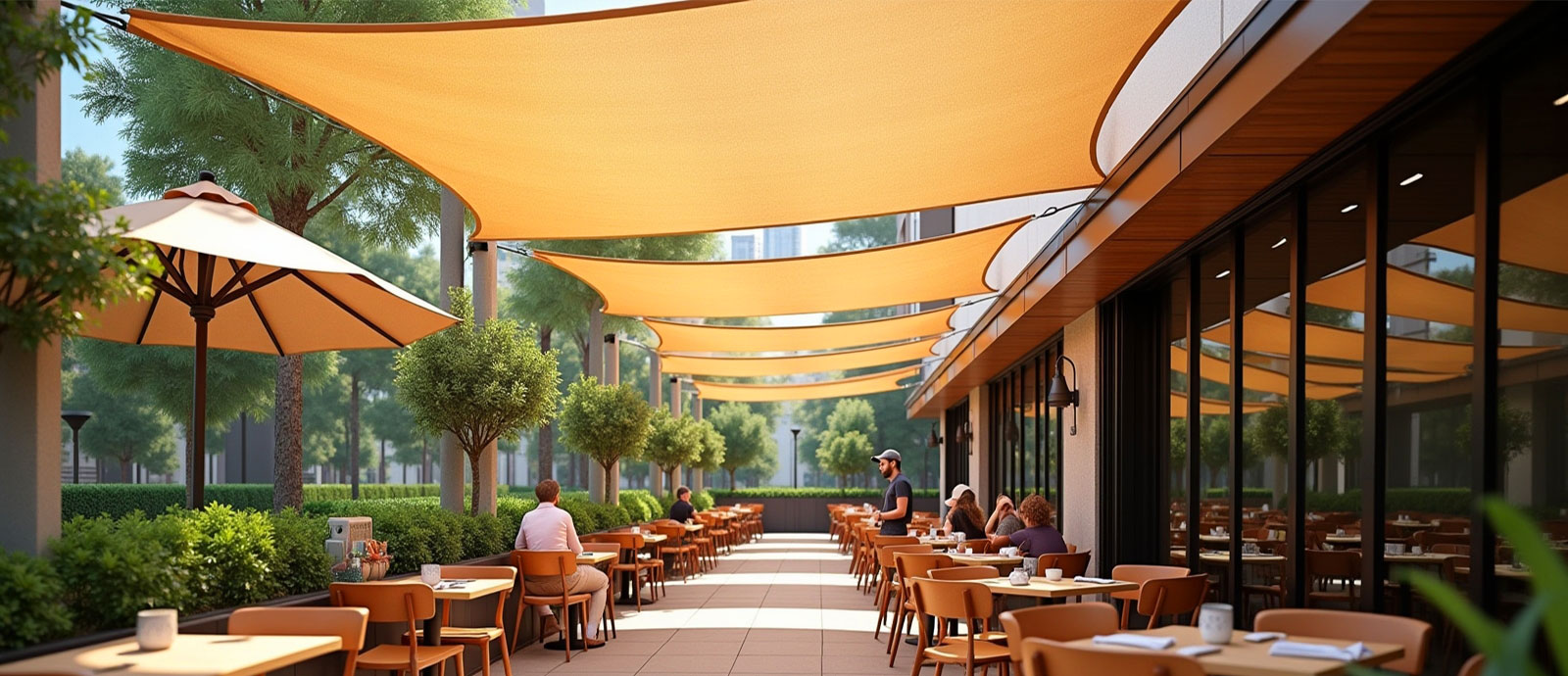Physical Address
304 North Cardinal St.
Dorchester Center, MA 02124
Physical Address
304 North Cardinal St.
Dorchester Center, MA 02124

The hospitality industry has witnessed a remarkable shift toward outdoor dining experiences, particularly following recent global events that emphasized the importance of open-air spaces. For café and restaurant owners, maximizing outdoor seating capacity has become essential for business growth and customer satisfaction. One of the most effective solutions for creating comfortable, weather-protected outdoor dining areas is the strategic installation of modern shade structures.
Today’s diners increasingly seek atmospheric outdoor experiences that combine fresh air with quality food and beverages. This trend has created both opportunities and challenges for food service establishments. While outdoor seating can significantly increase capacity and revenue potential, it also requires careful consideration of weather protection, customer comfort, and aesthetic appeal.
Restaurant patios and café terraces without adequate protection often struggle with inconsistent customer usage. On sunny days, intense heat and glare can make outdoor dining uncomfortable, while unexpected weather changes can force establishments to quickly relocate guests or close outdoor sections entirely. This unpredictability directly impacts revenue and customer experience.
Professional shade sails offer an elegant solution to these outdoor dining challenges, transforming exposed patios into comfortable, year-round dining destinations. These architectural fabric structures provide excellent protection from harsh sunlight while maintaining the open-air feeling that customers desire.
Unlike traditional umbrellas or fixed awnings, triangular and rectangular shade structures create visually striking canopies that can be customized to fit virtually any outdoor space configuration. Their tensioned fabric design allows for creative installations that complement existing architecture while providing maximum coverage efficiency.
The microclimate benefits extend beyond simple sun protection. Quality shade fabrics can reduce ambient temperatures by up to 15 degrees Fahrenheit in covered areas, creating comfortable dining conditions even during peak summer months. This temperature regulation encourages longer customer visits and increases the likelihood of repeat outdoor dining experiences.
Modern shade installations offer unprecedented design flexibility for hospitality businesses. Available in numerous colors, sizes, and configurations, these structures can be tailored to match brand aesthetics and architectural styles. Whether a café prefers minimalist contemporary designs or a restaurant wants to create a more tropical resort atmosphere, shade solutions can be customized accordingly.
The architectural impact of well-designed shade structures often extends beyond mere functionality. Many establishments find that their outdoor shade installations become distinctive features that enhance brand recognition and social media appeal. The dramatic geometric patterns created by overlapping triangular or curved shade elements can transform ordinary patios into Instagram-worthy dining destinations.
Professional installation allows for creative tension points and anchor systems that work with existing building features, landscaping elements, or custom posts. This flexibility enables businesses to maximize coverage while maintaining traffic flow, sight lines, and accessibility requirements.
Commercial-grade shade fabrics are engineered to withstand significant weather challenges while maintaining their appearance and protective qualities. High-quality materials typically feature UV-resistant treatments that prevent fading and degradation, ensuring long-term color retention and structural integrity.
Wind resistance is particularly important for restaurant applications, where sudden weather changes could create safety concerns or disrupt dining experiences. Professional shade systems incorporate proper tensioning and anchor specifications that allow fabric to flex appropriately during wind events while maintaining secure attachment points.
Water drainage capabilities are another crucial consideration. While shade fabrics are not typically designed as waterproof barriers, their tensioned installation creates efficient water runoff patterns that prevent pooling and structural stress during rain events.
The financial advantages of outdoor shade installations extend far beyond the initial investment cost. Increased usable outdoor seating directly translates to higher revenue potential, particularly during peak dining seasons when indoor capacity limitations might otherwise restrict business growth.
Extended operating seasons represent another significant economic benefit. With proper shade protection, outdoor dining areas can remain comfortable and operational during traditionally challenging weather periods, effectively extending the profitable outdoor season by several months in many climates.
Reduced cooling costs for adjacent indoor spaces also contribute to operational savings. By blocking direct sunlight from entering through windows and glass doors near outdoor seating areas, shade structures can decrease air conditioning demands and associated energy expenses.
Customer retention and satisfaction improvements often result in increased repeat business and positive reviews, contributing to long-term revenue growth that extends well beyond the immediate capacity increases.
Successful shade sail installations require careful planning regarding anchor points, fabric tension, and local building requirements. Professional assessment of existing structures, soil conditions, and architectural constraints ensures optimal performance and safety compliance.
Permit requirements vary significantly by location and installation scope. Many municipalities have specific regulations regarding temporary versus permanent shade structures, particularly for commercial applications. Working with experienced installers familiar with local codes helps avoid costly delays or compliance issues.
Seasonal considerations also influence installation planning. Many businesses prefer to complete shade projects during slower periods, allowing for full outdoor capacity when peak dining seasons arrive.
Proper maintenance extends the life and appearance of commercial shade installations significantly. Regular cleaning schedules help prevent debris accumulation and staining, while periodic tension adjustments ensure optimal performance and fabric longevity.
Most commercial-grade shade fabrics can withstand years of continuous outdoor exposure with minimal maintenance requirements. Simple cleaning protocols using mild detergents and soft brushes typically suffice for routine upkeep, making these installations practical for busy restaurant operations.
Professional inspection schedules help identify potential issues before they become costly problems, ensuring consistent protection and appearance throughout the structure’s service life.
Modern shade solutions represent a strategic investment for cafés and restaurants seeking to maximize their outdoor dining potential. By creating comfortable, protected outdoor environments, these installations enable businesses to increase capacity, extend operating seasons, and enhance customer satisfaction simultaneously.
The combination of aesthetic appeal, functional performance, and economic benefits makes professional shade installations an increasingly popular choice for hospitality businesses committed to outdoor dining excellence. As consumer preferences continue favoring open-air dining experiences, establishments with well-designed outdoor shade protection will maintain competitive advantages in attracting and retaining customers throughout all seasons.